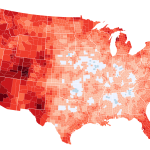California, a global hub for artificial intelligence innovation, is poised to become a national leader in AI regulation. Home to a significant portion of the world’s top AI companies, the state’s legislative actions carry considerable weight, potentially setting a precedent for other states and even influencing federal policy. This week, the California State Assembly is set to vote on SB 53, a bill demanding transparency reports from developers of powerful, “frontier” AI models. This pivotal legislation underscores the growing concerns surrounding the unchecked development and deployment of advanced AI systems.
SB 53: Shining a Light on Frontier AI
SB 53 targets the most advanced AI systems – those generative models capable of producing highly sophisticated outputs, demanding massive datasets and significant computing power. These “frontier” AI models, while offering transformative potential, also present significant risks. From the potential for biased outputs to concerns about misuse and the spread of misinformation, the need for oversight is undeniable. The bill mandates that developers of these systems submit regular transparency reports detailing various aspects of their models, including the data used for training, the model’s capabilities and limitations, and measures taken to mitigate potential harms. This proactive approach aims to ensure accountability and responsible innovation within the rapidly evolving AI landscape.
California’s Influence on National AI Policy
The defeat of a federal moratorium on state-level AI regulation in July opened a crucial window for California to take the lead. With the federal government seemingly hesitant to establish comprehensive AI regulations, individual states are stepping up to fill the void. California’s action is particularly significant given its position as a major player in the AI industry. The passage of SB 53 would likely encourage other states to follow suit, creating a patchwork of state-level regulations that could eventually influence the direction of federal policy. This could lead to a more nuanced and potentially more effective approach to AI governance than a single, nationwide approach, allowing for tailored regulations based on regional needs and priorities.
The Road Ahead: Challenges and Opportunities
While SB 53 represents a significant step towards responsible AI development, challenges remain. The definition of “frontier” AI models and the specifics of the required transparency reports will need careful consideration to avoid stifling innovation while still ensuring accountability. Furthermore, enforcing these regulations and ensuring compliance across a diverse range of AI developers will require robust mechanisms and resources. Despite these challenges, the potential for California to shape the future of AI regulation on a national and even global scale is undeniable. The passage of SB 53 would mark a crucial moment in the ongoing conversation about how to harness the power of AI while mitigating its inherent risks.
Conclusion:
The California State Assembly’s vote on SB 53 is more than just a local legislative matter. It represents a potential turning point in the national and perhaps global conversation about AI regulation. The outcome will not only shape the future of AI development in California but could also set a precedent for other states and influence the direction of federal policy, potentially leading to a more responsible and beneficial integration of artificial intelligence into society. The success of SB 53 will hinge on the ability to balance the need for innovation with the imperative for accountability and safety.
Based on materials: Vox





